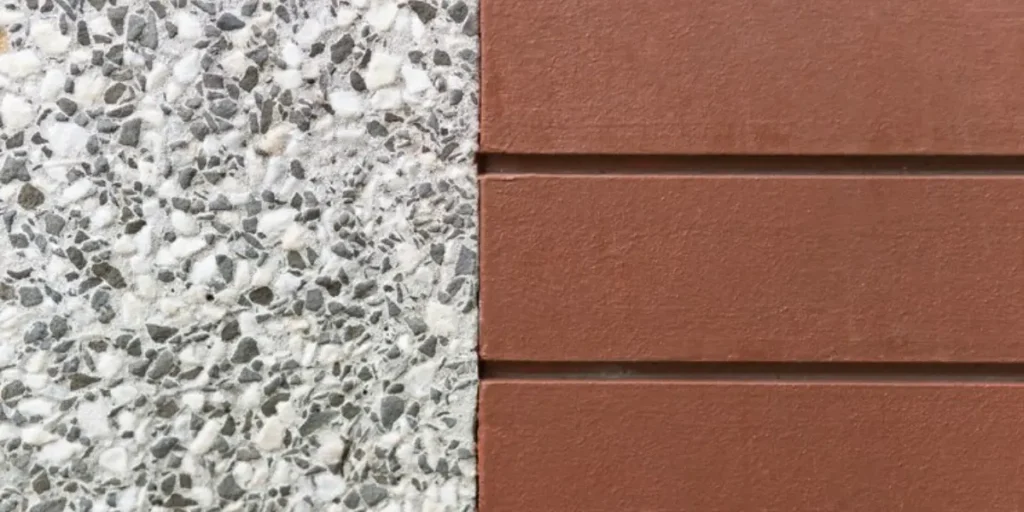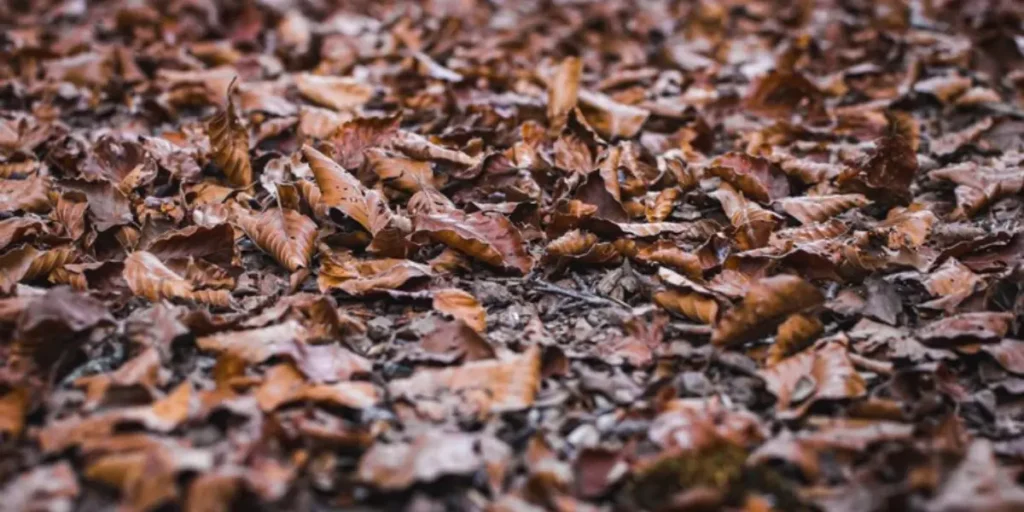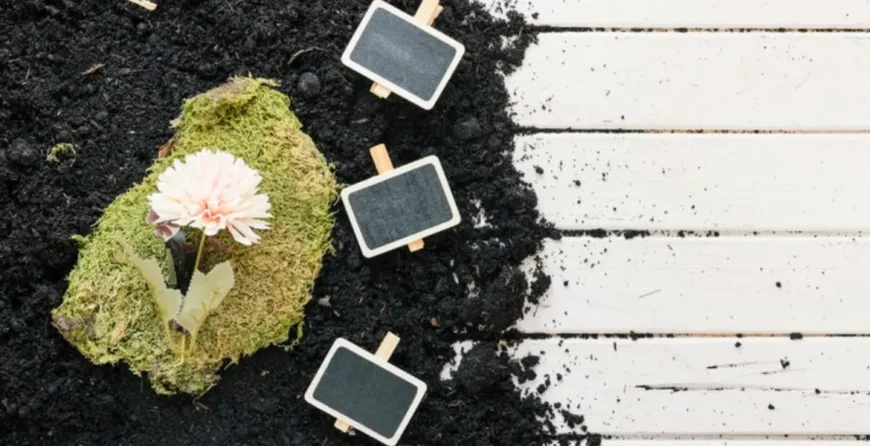Mulch is an essential landscape material that provides numerous benefits, but choosing between rubber mulch vs. wood mulch can be difficult since they each have their pros and cons. This comprehensive guide will explore all aspects of rubber mulch vs. wood mulch so you can determine which type is best for your needs.
At I Haul Landscape Services, we understand the importance of selecting the right mulch for your outdoor spaces. Our team of professionals is well-versed in the nuances of rubber mulch vs. wood mulch, and we can provide expert guidance to help you determine which option suit your landscape goals. With our extensive experience and commitment to excellence, we offer a range of landscaping services, including mulch installation and maintenance.
Rubber Mulch vs. Wood Mulch Pros and Cons

Let’s start by outlining some of the key pros and cons of rubber mulch vs. wood mulch:
What are the Pros of Rubber Mulch?
Weather resistant
Rubber mulch will not rot, mold, or degrade from exposure to moisture, rainfall, or sunlight like wood mulch can. It is not impacted by weather fluctuations.
Safety
Rubber mulch is a softer surface than wood mulch, which reduces safety risks for children and pets. Its cushions fall better than wood mulch.
Durability
With proper maintenance, a single application of rubber mulch can last 10-15 years before needing replacement or reapplication. Wood mulch needs replenishing every 1-3 years.
Easy maintenance
Rubber mulch does not require frequent top-dressing like wood mulch. It also prevents weed growth so less weeding is required.
What are the Cons of Rubber Mulch?
Higher material cost
The initial material cost of rubber mulch, around $2.50-$5 per square foot installed, is more expensive than wood mulch at $0.50-$2.50 per square foot.
Darker color
The black color of rubber mulch absorbs more heat than wood mulch.
Potential leaching
There is debate about chemicals potentially leaching from recycled rubber mulch over time. More research is still needed.
What are the Pros of Wood Mulch?
Natural material
Wood mulch is a natural, biodegradable material.
Aesthetics
Wood mulch comes in various natural colors and textures that some prefer the look of over black rubber mulch.
Lower cost
Installation costs are cheaper than rubber mulch at around $0.50-$2.50 per square foot.
What are the Cons of Wood Mulch
Requires frequent replenishing
Wood mulch breaks down more quickly, needing replacement every 1-3 years.
Messier
Wood mulch is prone to blowing and washing away in windy or rainy conditions. It also stains.
Safety issues
Mold, decay, and insects can grow in wood mulch presenting potential health hazards.
Less durable
Short service life, especially in climates with heavy rainfall or snowfall. Needs replenishing frequently.
Now that we’ve outlined the basic “rubber mulch vs. wood mulch pros and cons”, let’s explore some additional factors that can help determine which type is best for your project needs and landscape.
Rubber Mulch vs. Wood Mulch vs Bark Mulch
Another common mulching material option is bark mulch. Here’s a brief comparison of bark mulch vs rubber mulch vs. wood mulch:
Bark Mulch
Pros
Natural material, varieties of color/texture, cheaper than rubber
Cons
Prone to decay, less durable than rubber, the potential for floating in rains
Rubber Mulch
Pros
Highly durable, low maintenance, variety of color options, softer surface
Cons
Higher initial cost may leach chemicals, absorbs more heat
Wood Mulch
Pros
Natural aesthetics, inexpensive, variety of colors
Cons
Requires frequent replenishing, prone to blowing away, harbors pests
In terms of durability, rubber mulch significantly outlasts wood mulch or bark mulch, which need replenishing every 1-3 years. Rubber mulch can provide benefits for 10-15 years with no reapplication required. However, bark or wood mulches may be preferable for a more natural look depending on the landscape design objectives.
Recycled Rubber Mulch

Most rubber mulch on the market today is created from recycled tire rubber. Using recycled tires diverts them from landfills and puts this material to a beneficial reuse. Several factors make recycled rubber mulch attractive:
Durability
As mentioned, rubber mulch can last 10-15 years without needing replacement like organic mulches. This reduces material waste long-term.
Safety
Rubber particles are less sharp than wood or bark, providing a softer surface under playgrounds or high-traffic areas.
Sustainability
Recycling used tires saves natural resources and reduces manufacturing waste compared to virgin rubber products.
Cost savings
Over time, the extended lifespan of rubber mulch vs. wood mulch replacement offsets the higher upfront installation cost.
Some recycled rubber mulches are colored black using certified dyes to impart an attractive aesthetic. Other product options include shredded tire strips or tire crumb in various hues. Be sure to inquire about the materials and processes used to manufacture any recycled rubber mulch being considered. Overall, this sustainable material provides an excellent hardscape or landscape solution when durability is a primary concern.
Rubber Mulch vs. Wood Mulch Price Comparison
Installation costs are a major factor when comparing rubber mulch vs. wood mulch. Here’s an overview:
Initial material costs
- Rubber mulch typically runs $2.50-$5 per square foot installed on average.
- Wood mulch is cheaper at around $0.50-$2.50 per square foot installed.
Lifecycle costs
- Rubber mulch lasts 10-15 years on average before any reapplication is needed.
- Wood mulch needs replenishing every 1-3 years on average due to breakdown.
- Over 10 years, rubber mulch has lower overall costs due to less frequent replacement/materials needed.
Additionally, rubber mulch installation pricing may vary less seasonally versus wood mulch availability/pricing fluctuations. Professionals can spread rubber mulch faster than spreading/layering wood mulch too.
Rubber Mulch vs. Wood Mulch: Which is Right for You?
After reviewing the various factors in the rubber mulch vs. wood mulch comparison, here are some general guidelines to help determine the best choice:
High traffic/play areas
Rubber mulch is very durable and soft, making it ideal for heavy foot traffic areas like playgrounds that demand long-lasting performance.
Steep slopes
Rubber mulch will not erode or wash away easily on inclines like wood mulch can during rainstorms.
Low maintenance landscapes
Rubber mulch needs little to no intervention over 10+ years versus frequent wood mulch replenishment. Good for busy homeowners.
New installations
For brand new beds or planting areas, rubber mulch is a cost-effective solution that won’t need replacing for a very long time.
Pets
Rubber mulch’s softer properties provide protection from scrapes and lacerations compared to wood mulch.
Xeriscaping
Due to its reflective surface, rubber mulch helps conserve soil moisture versus absorptive wood mulches.
Shaded areas
Where light levels impede plant growth, rubber mulch’s heat retention increases soil temperatures.
Wood mulch may be preferable for more naturalized, wooded areas where the aesthetic of bark or wood chips better complements existing conditions. Ultimately, considering your priorities like durability, budget, maintenance preferences, and design goals will determine whether rubber mulch vs. wood mulch is a better long term investment for your project needs.
In summary, both rubber mulch vs. wood mulch have pros and cons to evaluate. But for applications seeking extreme longevity with minimal maintenance requirements, recycled rubber mulch is often the top choice overall when comparing to wood mulch.
Comparing Additional Mulch Types: Rubber Mulch vs Rock Mulch
Another popular hardscaping material to consider alongside rubber mulch is rock mulch. Here’s a brief comparison:
Aesthetics
Rock mulch comes in various natural colors and textures to complement a wide range of landscape designs. It has an earthy, natural look. Rubber mulch primarily comes in black but also other dye colors with a more modern aesthetic.
Durability
Properly installed rock mulch can last indefinitely with no maintenance needed. However, smaller rock pieces may settle or become displaced over time from weathering. Rubber mulch provides extremely long-lasting coverage for 10-15+ years.
Maintenance
Rock mulch requires no replenishing like wood mulch but may need occasional redistribution of loose pieces. Rubber mulch remains fully intact for its lifespan with no re-spreading required.
Drainage
Both rock mulch and rubber mulch allow excellent water infiltration into soil. However, rocks do not absorb heat the way rubber mulch does, which aids plant growth.
Cost
Initial material costs of installing rock mulch are cheaper than rubber mulch, around $1-3 per square foot. But over the long-term, rubber mulch provides greater overall cost savings due to its longevity before replacement is needed.
Safety
Rubber mulch provides a softer, gentler surface than rock mulch, reducing risks of cuts or abrasions. However, some prefer rocks’ natural aesthetic for a more rustic look.
In summary, for permanent, low-maintenance installations, rubber mulch has advantages over natural rock mulch due to its extreme durability and longevity before replacement is ever required. However, rock may be preferable for projects where budget concerns outweigh long-term efficiency or a naturalized appearance is paramount.
Choosing the Right Rubber Mulch for Your Project
Within the category of rubber mulch, there are different product types to consider:
Shredded Tire Mulch
Rubber strips or shreds ranging 0.5-2 inches for a textured look. May compact slightly over time.
Tire Crumb Mulch
Finely ground crumb sized 0.25-0.5 inches for a smooth appearance. Won’t settle or compact.
Playground-Grade Mulch
Extra-fine crumb specially engineered for impact absorption under playgrounds. Meets ASTM standards.
Rubber Mulch nuggets
Larger 1-2.5 inch pre-colored rubber pieces for a natural mulched look. Less prone to blowing away.
Evaluating your specific project needs like budget, appearance goals, and applications will determine whether shredded, crumb, nugget, or playground-grade rubber mulch is most suitable.
Conclusion
This detailed comparison explored all the key factors to consider when determining whether rubber mulch vs. wood mulch is best for your specific landscape project needs. Recycled rubber mulch offers unparalleled durability, safety, low maintenance requirements and sustainable re-use of waste tire materials. While the upfront material cost is higher, rubber mulch’s multi-decade lifespan makes it extremely cost-effective in the long run versus frequent replacement of wood mulch. For applications seeking the ultimate in long-lasting, low-effort performance, rubber mulch should be the top choice.
For any of your mulching needs in San Diego county, contact I Haul Landscape. As a full-service landscape company, we have years of experience installing both rubber and wood mulches properly for optimal results. Reach us by phone at (760) 586-9828 or visit ihaullandscape23@gmail.com. Our team of professionals can help determine which type of mulch is right for your project and ensure the job is done efficiently and to your satisfaction.
FAQs
Can You Mix Rubber Mulch with Wood Mulch?
You can mix rubber mulch with wood mulches, but it’s generally not recommended as the materials will separate over time. Rubber mulch also makes weed growth more difficult to control when mixed. It’s best to use mulches separately for defined areas.
Is Rubber Mulch a Fire Hazard?
No, rubber mulch is actually fire resistant since it’s made from used vehicle tires. It will not act as kindling or fuel for fire spread the way wood mulches can. Rubber melts instead of burning which helps extinguish flames. Proper installation is still important though to avoid over-heating plants.
How Are Rubber Mulch and EWF Playground Mulch Made?
Both are created from recycled tire rubber. Standard rubber mulch is shredded or ground tires colored black most often. Engineered Wood Fiber (EWF) playground mulch goes through additional processing to produce a finer uniform fiber specifically for impact absorption under play areas to meet ASTM guidelines.
Is Rubber Mulch Better than Wood Mulch?
Generally yes – rubber mulch offers significantly better durability at 10-15 years versus replacing wood mulch every 1-3 years. It requires no replenishing, weed removal or spraying. While initially more expensive, rubber mulch saves long-term on installation labor and material costs due to its lifespan before replacement is needed. Its safety qualities are also better suited to high-traffic and children’s areas.

